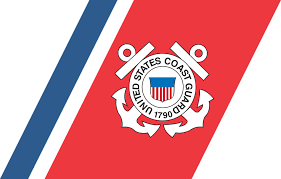Subject: Second Revision of Southern Currents 12-013 Submission of vessel “Ports of Call” list to CBP prior to arrival
Purpose:
This revision continues the changes in the time frame of the “Ports of Call” list being requested by CBP from one year to two years, continues the change in the email address for the PAU in New Orleans, LA, and adds the requests for lists for coastwise arriving vessels as well as foreign arrivals.
The purpose of this notice is to request from vessel agents a “Ports of Call” list on all arriving vessels to the Tri-Port (New Orleans, Baton Rouge, and Gramercy). This list will ensure that CBP dispatches Agriculture Specialists to inspect all high risk vessels for the presence of Asian Gypsy Moth (AGM) egg masses. This notice will cover CBP’s notification requirements.
Background:
The Department of Homeland Security, US Customs and Border Protection (CBP) and the Department of Agriculture, Animal and Plant Health Inspection Service (APHIS) have coordinated efforts to prevent the introduction of harmful insect pests into the United States. One such pest is the Asian Gypsy Moth, an extremely invasive species of moth that has not been introduced into the United States, and is not currently present in North America. This pest is destructive to the ecology, may feed on over 600 plant species, and can seriously affect U.S. agriculture, and forest resources. An AGM infestation could result in the defoliation of environmentally important species. Dense populations of AGM could cause economic and environmental damage. AGM is presently known and well established in East Asian ports in China, Japan, South Korea, and Eastern Russia, between 24 and 60 degrees North Latitude. The female AGM deposits egg masses during the high risk flight season between May and October, and these egg masses are the most likely life stage to be found on vessels which have visited or transited high risk ports during the AGM high risk flight season.
An AGM find on a vessel may require that the vessel be:
- Ordered into international waters
- Required to undergo treatment• Re-inspected
Procedures:
To ensure that CBP dispatches Agriculture Specialists to conduct AGM inspections expeditiously on vessels which have visited or transited a high risk AGM port during the high risk flight season, CBP is requesting the vessel’s “Ports of Call” list prior to arrival in New Orleans which allow CBP to target vessels requiring an AGM inspection and enable Agriculture Specialists to focus on high risk vessels while facilitating the entrance of lower risk vessels.
Previously, vessel “Ports of Call” lists were obtained upon boarding the vessel once in port, and, subsequently, many vessels that did not require an AGM inspection were boarded by an Agriculture Specialists ahead of high risk vessels that required an intensive AGM inspection.
CBP is requesting that prior to the arrival of a vessel from foreign or coastwise in the New Orleans Tri-Port, the vessel master, agent, owner, operator or designee, fax or e-mail a copy of the vessel’s ” Ports of Call” list to the CBP’s Passenger Analysis Unit (PAU).
- PAU Telephone Number: (504) 623-6620
- PAU Fax: 504-623-6635
- PAU Group E-mail: pau-msv@cbp.dhs.gov
The vessel “Ports of Call” list will be the list of all ports visited by the vessel over the past two (2) calendar years.
Suspect AGM Egg Mass Discoveries by Vessel Crew:
If a suspect AGM egg mass is discovered onboard a vessel before arrival at the Port of New Orleans, the vessel agent/representative should:
- Inform the captain to have a crewmember carefully scrape off the suspect AGM egg mass with a knife or paint scrapper and place the egg mass in a Ziploc bag. Do not add alcohol.
- Have the crewmember immediately place the specimen in a refrigerator. Do not freeze.
- Notify the CBP Operations Desk at (504) 623-6600
A CBP boarding team will be dispatched to the vessel to conduct an AGM inspection. If the Agriculture Specialist determines that the specimen is suspect for AGM, normal AGM protocols will be followed. Once the AGM inspection is complete, the Agriculture Specialist will collect the specimen and submit it to the local USDA PPQ identifier for laboratory analysis.
Note: If the suspect AGM infested vessel is diverted to a foreign port before entering the Port of New Orleans, the CBP Operations Desk must be notified and the vessel crew should place the suspect egg mass in alcohol and/or incinerate the specimen. Never throw a suspect AGMspecimen overboard
Effective Date:
The procedures contained in this notice are effective upon receipt. Please contact Chief CBP Officer Michael J. Ruiz at michael.ruiz.cbp.gov or (504) 623-6651 with questions or concerns.

